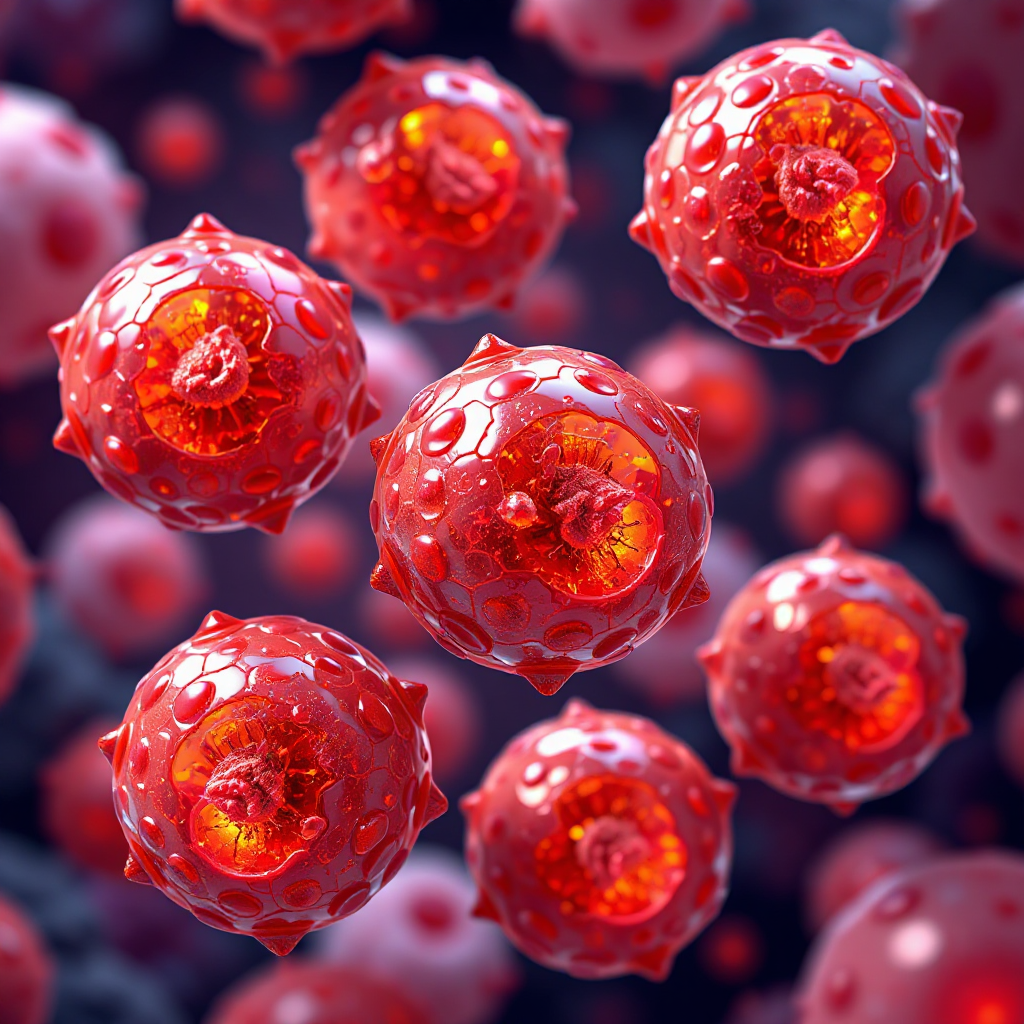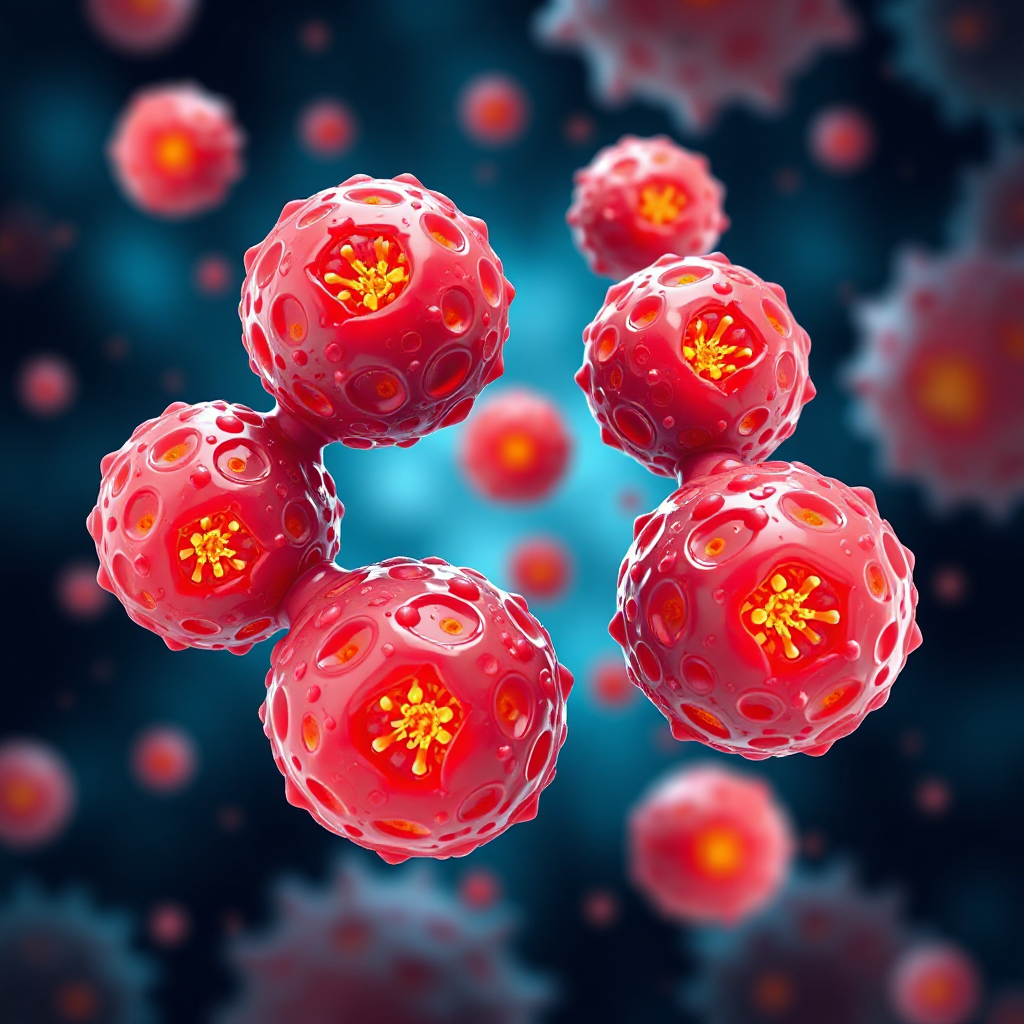Understanding Epithelioid Hemangioendothelioma EHE and Its Causes

Epithelioid hemangioendothelioma (EHE) is an extremely rare vascular tumor, with fewer than one person per million diagnosed annually. This condition belongs to the sarcoma family and exhibits intermediate malignancy, meaning it behaves less aggressively than high-grade cancers but can still spread. You may encounter EHE in various organs, including the liver, lungs, and bones. Other affected areas can include the head, neck, thyroid, and even the brain or spine. Its unique cellular features, such as intracytoplasmic vacuoles and stromal changes, distinguish epithelioid hemangioendothelioma EHE from other vascular tumors.
Key Takeaways
Epithelioid hemangioendothelioma (EHE) is a rare type of tumor. It can grow in different parts of the body. Finding it early helps people live longer.
Changes in genes, like the WWTR1-CAMTA1 fusion, cause EHE. Learning about these changes may help create better treatments.
EHE symptoms can be hard to notice. They may include pain, feeling tired, or losing weight. Watch for unusual body changes and see a doctor if needed.
Surgery is the best way to treat EHE in one area. It helps people live longer than other treatments.
Palliative care helps people with advanced EHE feel better. It treats symptoms and supports emotional health for a better life.
Is Epithelioid Hemangioendothelioma EHE Malignant?
Classification and Behavior
Epithelioid hemangioendothelioma (EHE) is classified as a malignant tumor due to its ability to grow uncontrollably and invade healthy tissues. However, its behavior varies widely. Some tumors grow slowly or even shrink without treatment, while others exhibit aggressive characteristics. You may find that EHE arises in soft tissue, bone, skin, or organs like the liver and lungs.
Pathologists use specific criteria to classify EHE. These tumors often display unique cellular features, such as vacuolated endothelial cells arranged in short cords and strands, resembling primitive blood vessel structures. Additionally, EHE stains positively for markers like CD31 and CD34, which are proteins associated with vascular tumors. These markers help confirm the diagnosis, with CD31 and CD34 showing a diagnostic accuracy of 97%.
The tumor's classification also depends on its location and spread. For example, patients without pleural involvement have a survival rate exceeding 70%, while those with pleural involvement see a significant drop to 22%. This highlights the importance of early detection and understanding the tumor's behavior.
Potential for Metastasis
EHE has a significant potential for metastasis, meaning it can spread to other parts of the body. This characteristic makes the prognosis uncertain. Life expectancy for patients ranges from 1 to 15 years, depending on factors like the tumor's location, size, and whether it has metastasized.
Patients with metastases at diagnosis often face worse outcomes. Symptoms such as weight loss, anemia, and hemoptysis (coughing up blood) are associated with poor prognosis. For instance, male patients with chest pain and metastases typically have a median survival of less than a year. However, early and complete surgical removal of the tumor can improve survival rates.
The cumulative survival rates for EHE patients provide some hope. At one year, the survival rate is 96.2%, dropping to 87.0% at three years and 75.3% at five years. These statistics emphasize the importance of timely diagnosis and treatment to manage the disease effectively.
Causes of Epithelioid Hemangioendothelioma EHE

Genetic Mutations
Genetic mutations play a significant role in the development of epithelioid hemangioendothelioma EHE. Most cases involve a specific genetic alteration known as the WWTR1-CAMTA1 gene fusion. This mutation results from a chromosomal rearrangement and is present in approximately 90% of patients. It is considered a defining feature of the disease.
A smaller subset of patients exhibits a different genetic fusion called YAP1-TFE3. This mutation is less common but is associated with unique cellular characteristics. These genetic changes disrupt normal cell behavior, leading to the formation of tumors. Understanding these mutations helps researchers develop targeted therapies, offering hope for more effective treatments in the future.
Environmental and Unknown Factors
While genetic mutations are a primary cause, environmental and unknown factors may also contribute to the development of epithelioid hemangioendothelioma EHE. Researchers have not identified specific environmental triggers, but some speculate that exposure to certain chemicals or radiation could play a role.
In many cases, the exact cause remains unclear. This uncertainty can make it challenging to prevent the condition. However, ongoing research aims to uncover additional risk factors and improve early detection methods. By staying informed and discussing any concerns with your healthcare provider, you can take proactive steps toward managing your health.
Symptoms of Epithelioid Hemangioendothelioma EHE
General Symptoms
Epithelioid hemangioendothelioma EHE often presents with symptoms that can be mistaken for other conditions. You might experience general signs such as:
Pain in the affected area.
A noticeable mass, which may or may not feel tender.
Persistent fatigue or low energy levels.
Fever without an obvious cause.
These symptoms can vary in intensity. For example, some individuals report mild discomfort, while others face severe pain that disrupts daily activities. If the tumor affects your liver, you might feel pain in your abdomen. When the lungs are involved, you could experience trouble breathing, coughing, or even coughing up blood.
Organ-Specific Symptoms
The symptoms of EHE depend heavily on the organ it affects. This tumor can appear in the liver, lungs, bones, or even the spine, leading to a wide range of issues. For instance, you might notice:
Bone pain or frequent fractures if the tumor involves your bones.
Difficulty walking or moving when the spine is affected.
Swelling or discomfort in the abdomen if the liver is involved.
Skin lumps or bumps that appear red or blue.
Respiratory problems like coughing or shortness of breath when the lungs are impacted.
In some cases, you might also experience nausea, fever, or swelling in the area of the tumor. These symptoms often develop gradually, making early detection challenging. Paying attention to persistent or unusual changes in your body can help you seek medical advice sooner.
Diagnosis of Epithelioid Hemangioendothelioma EHE
Imaging Techniques
Imaging plays a crucial role in diagnosing epithelioid hemangioendothelioma EHE. You may undergo a combination of imaging methods, including CT, MRI, and PET/CT scans, to identify the tumor accurately. CT scans often reveal low-density images with mild delayed enhancement, while MRI excels in evaluating soft tissue tumors. For example, MRI can provide detailed insights into the tumor's structure and its relationship with surrounding tissues. PET/CT scans, particularly those using fluoride-18-fluorodeoxyglucose, are highly effective in detecting EHE in areas like the liver or thoracic vertebrae.
Despite their effectiveness, imaging techniques can present challenges. EHE's rare and variable nature often leads to delayed diagnosis or misdiagnosis. Over half of patients may not show symptoms, and the tumor's appearance can differ significantly across cases. These factors highlight the importance of combining imaging results with other diagnostic methods.
Biopsy and Pathology
A biopsy is essential for confirming an EHE diagnosis. Fine-needle aspiration biopsy (FNAB) is commonly used to collect tissue samples. When examined under a microscope, these samples reveal distinct features that help identify EHE. You might find dispersed single cells with epithelioid morphology, mild nuclear pleomorphism, and unique characteristics like nuclear grooves or intranuclear pseudoinclusions. Intracytoplasmic lumina, often containing rare erythrocytes, are another hallmark of EHE.
Pathologists also observe the tumor's growth patterns, such as infiltrative or vasculocentric growth. These findings, combined with imaging and clinical data, provide a comprehensive understanding of the tumor. This multi-faceted approach ensures a more accurate diagnosis.
Genetic Testing
Genetic testing offers valuable insights into EHE. Most cases involve the WWTR1-CAMTA1 gene fusion, found in approximately 90% of patients. A smaller subset exhibits the YAP1-TFE3 fusion, which is more common in younger individuals. These genetic markers are critical for confirming the diagnosis and understanding the tumor's behavior.
Gene Fusion | Prevalence in EHE Cases |
|---|---|
WWTR1-CAMTA1 | ~90% |
YAP1-TFE3 | ~10% |
Other Rare Alterations | Very Rare |
By identifying these genetic changes, you and your healthcare team can explore targeted therapies. This approach not only improves diagnostic accuracy but also opens the door to personalized treatment options.
Treatment Options for Epithelioid Hemangioendothelioma EHE

Surgery
Surgery is often the first-line treatment for Epithelioid hemangioendothelioma EHE, especially when the tumor is localized. If you have a single tumor, surgical resection can remove the tumor and surrounding tissue, offering a chance for long-term control. For liver-specific cases, liver resection (LR) serves as a primary treatment option. It allows doctors to diagnose and treat the condition simultaneously. In more advanced cases, liver transplantation (LT) may be considered, particularly when the disease is confined to the liver.
Surgical Option | Description |
|---|---|
Surgical Resection | Reported to achieve satisfying long-term results for patients with hepatic EHE. |
Liver Resection (LR) | Primary treatment modality for localized lesions, allowing for diagnosis and treatment simultaneously. |
Liver Transplantation (LT) | A treatment option for patients with hepatic EHE, especially when the disease is localized. |
Radiofrequency Ablation (RFA) | A minimally invasive procedure used for localized tumors. |
Surgical outcomes vary, but studies show that patients undergoing surgery have higher survival rates compared to those who do not. For example, the 3-year overall survival rate for surgical therapy exceeds 90%.
Radiation Therapy
Radiation therapy may be an option if surgery is not feasible. It can help eliminate remaining cancer cells after surgery or serve as the primary treatment for patients who cannot undergo surgery. This approach is particularly useful for bone lesions or to relieve symptoms like pain.
However, EHE generally shows limited sensitivity to radiation therapy. This makes its effectiveness uncertain in some cases. The lack of standard guidelines for adjuvant therapy further complicates treatment decisions.
Despite these challenges, radiation therapy remains a valuable tool for symptom management and improving quality of life.
Systemic Therapies
Systemic therapies aim to treat EHE when surgery or radiation is not suitable. Chemotherapy agents like paclitaxel and anthracyclines have been used, though their effectiveness is limited. Antiangiogenic drugs, such as sorafenib and bevacizumab, have shown partial responses in some patients. For advanced cases, the MEK inhibitor trametinib has demonstrated promising activity.
Treatment Type | Details | Response Rate |
|---|---|---|
Chemotherapy | Paclitaxel (28% of patients), anthracyclines (liposomal doxorubicin) | No objective response |
Antiangiogenic drugs | Sorafenib (2 out of 15 patients had partial responses) | Partial response in 13.3% |
Bevacizumab (2 out of 7 patients had partial responses) | Partial response in 28.6% |
Although none of these therapies are formally approved for EHE, ongoing research continues to explore new options. International collaboration and advancements in targeted therapies offer hope for improved outcomes in the future.
Palliative Care
Palliative care focuses on improving your quality of life when dealing with advanced epithelioid hemangioendothelioma EHE. This approach addresses symptoms, emotional well-being, and overall comfort. It does not aim to cure the disease but helps you manage its effects effectively.
You may benefit from several palliative care strategies tailored to your needs. These include:
Watchful waiting: Doctors monitor your condition closely without immediate treatment. This option works best when the side effects of treatment outweigh its benefits.
Targeted therapy: Medications can block the tumor's access to nutrients and oxygen, slowing its growth.
Radiation therapy: This method relieves symptoms like pain or discomfort. It can also target any remaining cancer cells after surgery.
Palliative care also involves managing pain and other physical symptoms. You might receive medications to control pain, nausea, or fatigue. Physical therapy can help improve mobility and strength, especially if the tumor affects your bones or spine. Emotional support is equally important. Counseling or support groups can help you cope with the stress and anxiety that often accompany a serious diagnosis.
Your healthcare team will work with you to create a personalized plan. This ensures that your care aligns with your goals and preferences. Open communication with your doctors and loved ones is essential. It allows you to make informed decisions about your treatment and focus on what matters most to you.
Epithelioid hemangioendothelioma EHE is a rare and complex condition that requires a nuanced approach to care. Early diagnosis significantly improves survival rates, with 1-, 3-, and 5-year cumulative survival rates of 96.2%, 87.0%, and 75.3%, respectively. Personalized treatment plans depend on factors like genetic alterations, tumor location, and disease extent. You should collaborate with a multidisciplinary care team, including specialists in oncology and radiology, to explore all treatment options. Open communication with trusted healthcare providers ensures you understand your choices and feel supported throughout your journey.
FAQ
What makes EHE different from other tumors?
EHE is a rare vascular tumor with intermediate malignancy. It grows slower than aggressive cancers but can still spread. Its unique genetic mutations, such as WWTR1-CAMTA1 fusion, and its ability to appear in multiple organs make it distinct.
Can EHE be cured completely?
Complete cure depends on the tumor's location and spread. Surgery offers the best chance for localized cases. Advanced cases may require systemic therapies or palliative care to manage symptoms and improve quality of life.
How is EHE diagnosed?
Doctors use imaging techniques like CT or MRI scans to locate the tumor. A biopsy confirms the diagnosis by analyzing tissue samples. Genetic testing identifies specific mutations, such as WWTR1-CAMTA1, to ensure accurate diagnosis.
Is EHE hereditary?
EHE is not considered hereditary. It results from genetic mutations that occur spontaneously, such as the WWTR1-CAMTA1 fusion. These mutations are not passed down from parents to children.
What should you do if you suspect EHE?
If you notice persistent symptoms like pain, unexplained weight loss, or difficulty breathing, consult a healthcare provider. Early diagnosis improves treatment outcomes. Discuss your symptoms and request imaging or genetic testing if necessary.
Tip: Keep track of unusual symptoms and share them with your doctor for a thorough evaluation.
See Also
Key Characteristics and Insights on Hemangioblastoma
Understanding Ependymoma: Symptoms and Key Information
Ewing's Sarcoma: Symptoms and Underlying Causes Explained
Comprehensive Guide to Esophageal Cancer Symptoms and Causes
